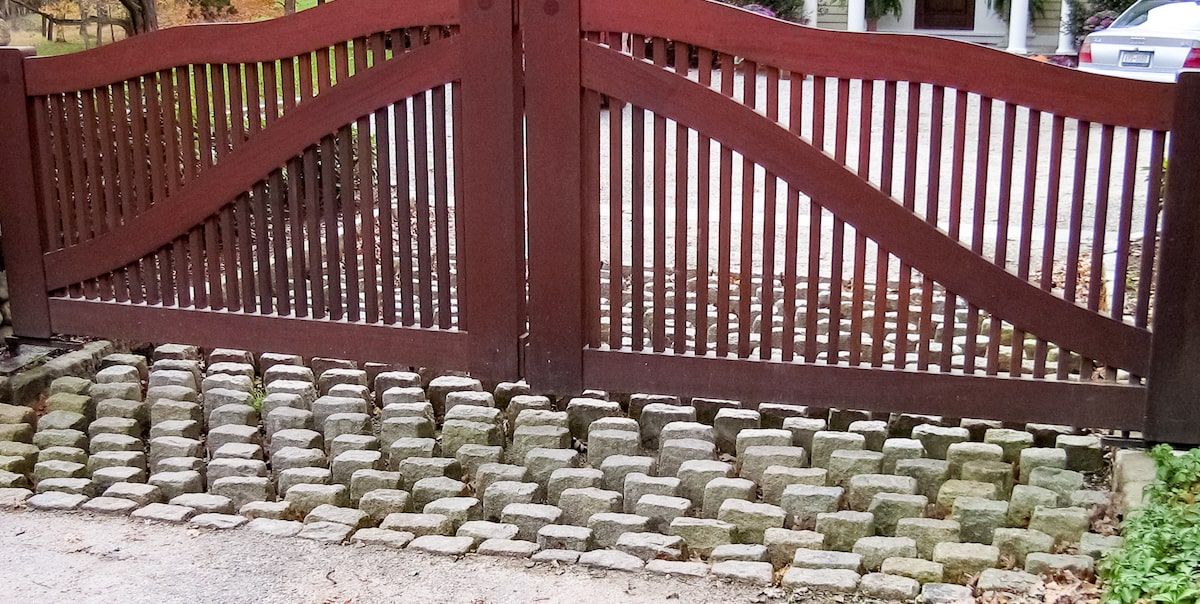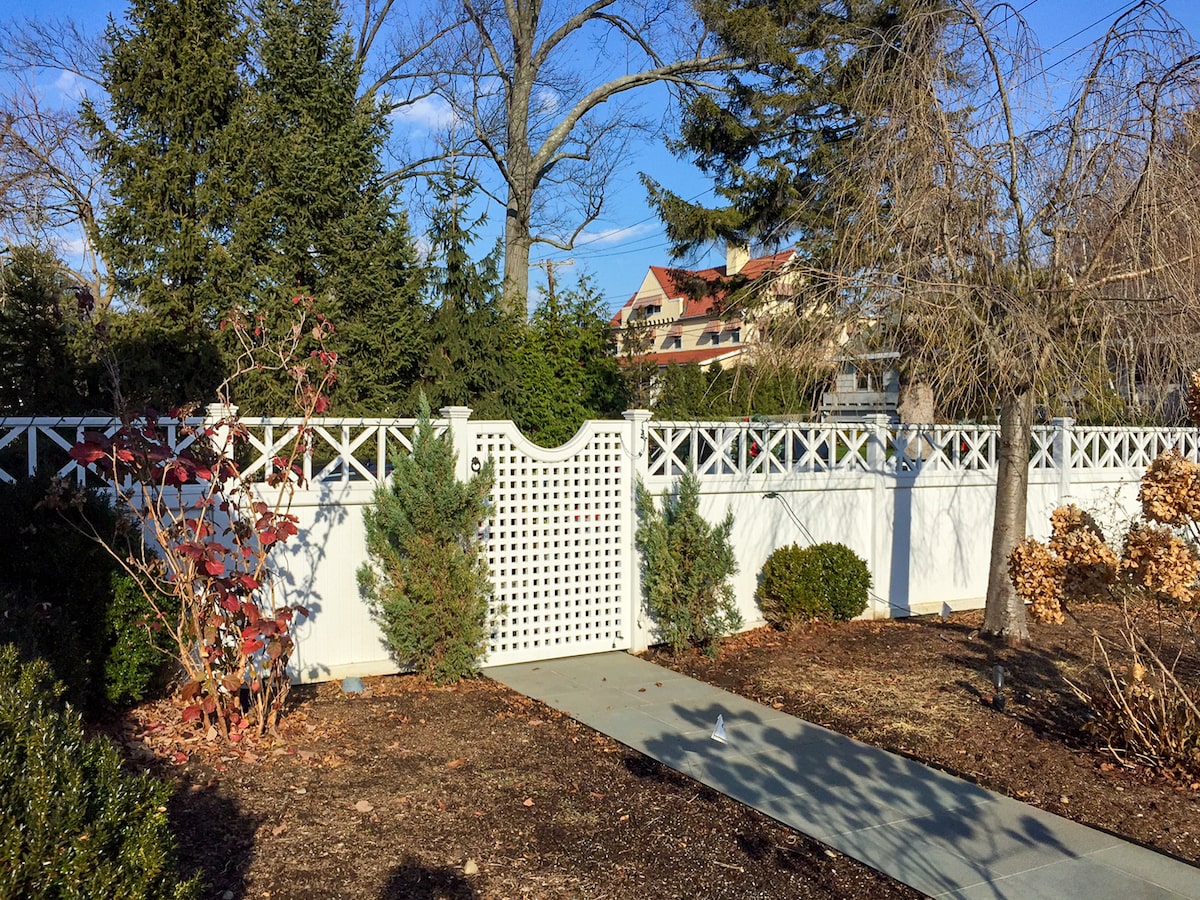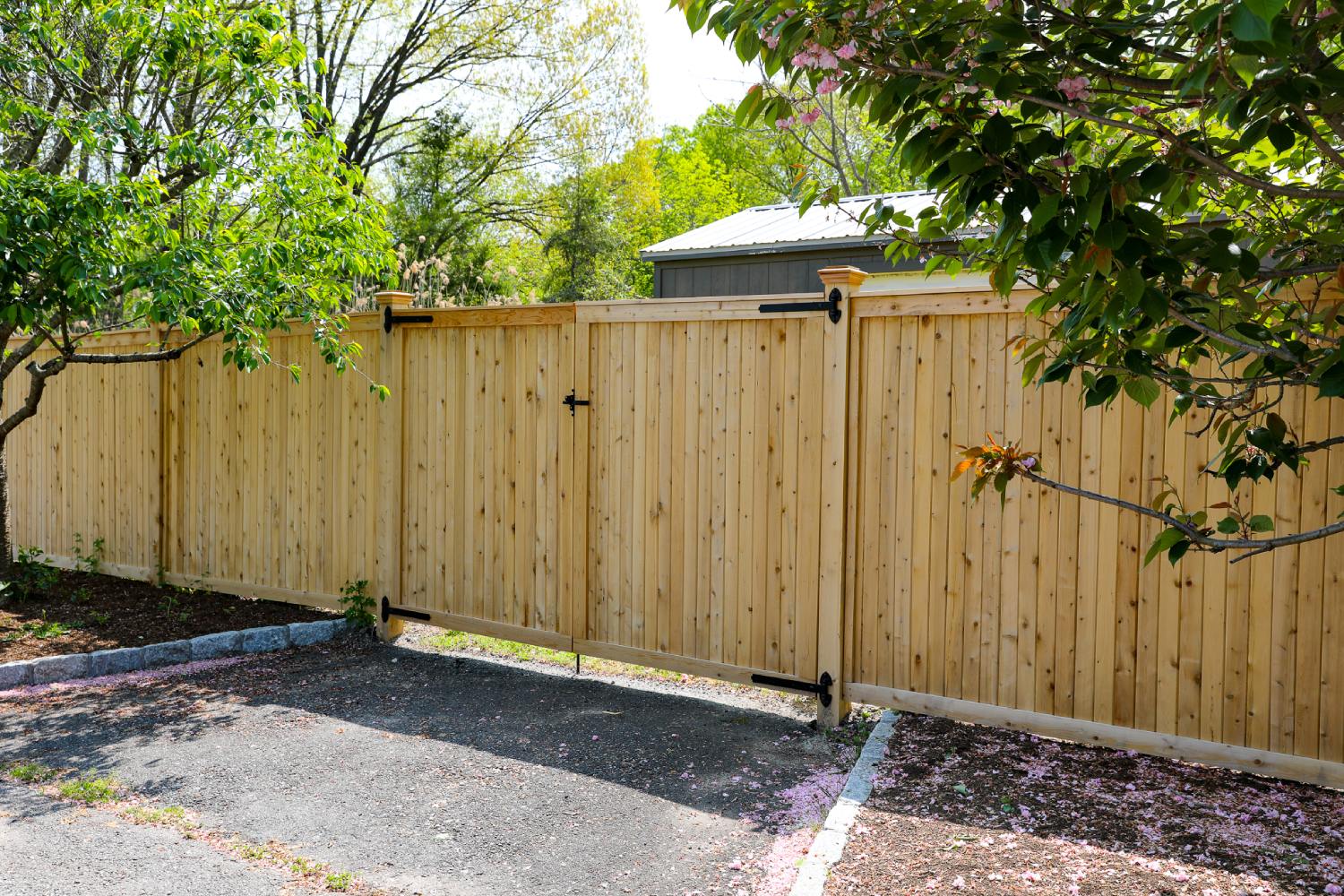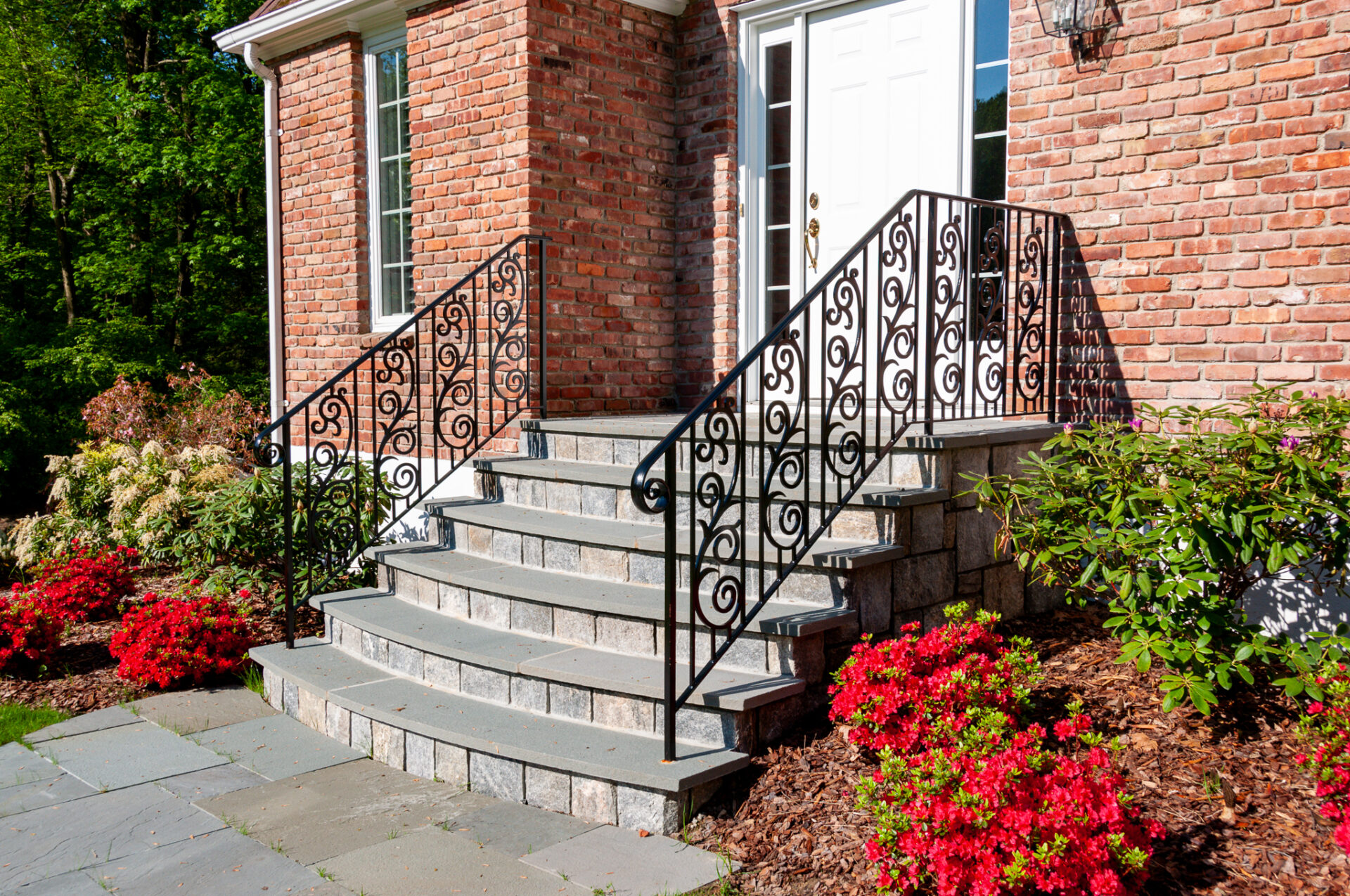Cattle guards are ingenious structures originally designed for controlling livestock movement – and often used today to keep deer from wandering onto your property.
Cattle guards prevent certain sorts of animals from crossing into specific areas. Their clever design features evenly spaced bars that allow vehicles and pedestrians to pass safely while deterring deer, cattle, and other livestock. These grids are often strategically placed where gates are impractical, or sometimes in conjunction with fencing and gates.
How Does a Cattle Guard Work?
A cattle guard is a grating placed over a pit that deters livestock from crossing over it. This simple design exploits two different weaknesses of cattle and other animals, such as deer. These animals have poor depth perception, and the design of cattle guards presents them with a very dangerous looking obstacle – one which they’ll typically try to avoid.
If a deer is adventurous enough to try walking on a cattle guard, they find that their hooved feet can’t get enough support on the rounded tops of the gratings. They’ll test the first beam, find it isn’t sturdy enough, and avoid walking on it further. In this way, a cattle guard works like a fence – but without preventing people or vehicles from safely crossing.
What Does a Cattle Guard Look Like?
Cattle guards generally look like grates – the sort you would see on a city street or sidewalk, but with thicker members. They often consist of metal bars spaced closely enough together that you can walk or drive across them without trouble, but an animal with hooves would have difficulty finding steady footing.

Flat Cattle Guard Design
Flat cattle guards – the type we build at Garon Fence – are typically made of metal pipes or rods arranged in a grid pattern. They’re usually installed on concrete foundations to create a bridge-like structure over a deep pit. This design creates the optical illusion of unsteady terrain, and the rounded tops on each bar provide unstable footing that deters animals from crossing. This style can also be made out of concrete or even cobble stones turned on their side.
The deep pit allows for snow, ice, and other debris to collect without impacting the function of the cattle guard, and the concrete foundation provides the strength to allow vehicles to drive over without issue.
Boxed Design
Boxed cattle guards are enclosed by a steel frame. This design allows them to be placed directly on the ground without requiring any concrete, pit, or buried support. The enclosing box is welded to the guard and prevents dirt from building up beneath it.
Boxed cattle guards are suited for temporary setups. They’re commonly used in places like construction sites, mines, and truck wash areas. This style isn’t recommended as a permanent solution due to the fact that they quickly fill up with snow and other debris, allowing deer to walk across unfettered.
What Materials Are Cattle Guards Made From?
Metal, stone, and concrete are popular options for custom-made cattle guards. Metal cattle guards are typically made from heavy-duty steel and are ideal for well-trafficked areas, including high-speed roads. Stone cattle guards are also available for customers who want to preserve a more rustic or natural look. Rather than a metal grate, stone cattle guards look almost like cobblestones, but with gaps in between to serve the same deterrent function. (See an example here.) Concrete cattle guards are another durable and long-lasting option.
Whatever material you choose, custom cattle guards can be made to fit your specific requirements and design preferences.
How Is a Cattle Guard Installed?
To install a cattle guard, first the site must be prepared by clearing and leveling it. Then, a pit is dug and drainage is installed. Next, concrete footings are formed, aligned, and poured to make sure they’re even and just below ground level. These footings support the weight of the cattle guard and any vehicles traveling over them.
Once the foundation is ready, the grid is positioned in the area. To secure the guard, you then bolt or weld it to the concrete and metal foundation. Finally, you backfill and grade the area to create a smooth transition for vehicles.
Are Cattle Guards Safe?
Garon Fence’s custom cattle guards are made from heavy duty steel pipes and frameworks, making them completely safe for vehicles and humans to cross. However, care must always be exercised for pedestrians, as the rounded top edges do create an unstable footing.
For animals, however, there is a risk: although cattle guards generally work as a deterrent, preventing animals from attempting to cross them, if an animal does decide to try and cross the guard, their hooves can sometimes get stuck, leading to potential injuries.
In general, however, cattle guards are safe for both people and animals.
How Much Does a Cattle Guard Cost?
The cost of a cattle guard varies depending on the size, materials, and required preparation for the installation site. Garon Fence offers free on-site consultations to provide you with an accurate estimate for your project.
What Fencing Is Compatible with Cattle Guards?
Many people choose to combine a cattle guard with other gate and fencing options to form a custom solution for deterring deer and other animals from entering their property.
For instance, you might want a cattle guard across your driveway for use during the daytime when people and vehicles are coming and going, with a gate for use at night.
Strong Fencing
Deer fencing installed in conjunction with a cattle guard across your driveway can be the perfect combination for protecting your lawn and garden without a gate. If you’d prefer not to open and close a gate each time you cross your driveway, you’ll love the combination of fencing around the perimeter of your lawn with a cattle guard across your drive. With a strong, flat-design cattle guard, people and vehicles can move freely across the driveway while animals are prevented from entering.
Driveway Gates
Driveway gates are the perfect option to combine with a cattle guard for an all-around deer deterrent solution. Deer can jump high enough that they can clear some gates, but cattle guards will prevent them from making the attempt. Some people prefer to close their gate only at night, relying on the cattle guard during high-traffic times of day. Utilizing gates in conjunction with cattle guards improves your physical security, since cattle guards by themselves won’t stop vehicles or pedestrians from crossing.
Why Choose a Cattle Guard?
Cattle guards provide a durable, worry-free alternative to protect your lawn and garden from deer.
Benefits of Cattle Guards
- They’re low maintenance and durable
- They don’t limit human mobility
- They’re safe for vehicles
- Deer and other animals remain unharmed
What to Consider When Shopping for a Cattle Guard
There are several considerations to keep in mind as you’re choosing a cattle guard. First off, what’s the look of your driveway and property? Assessing your overall design preferences can help you choose which materials – steel, stone, or concrete – that you would prefer.
It’s also important to consider the load capacity. What kind of vehicles will regularly cross your cattle guard? You want to make sure your cattle guard is durable over the long term and suited to the amount of traffic the area receives.
Lastly, you need to consider whether the area where you want a cattle guard has enough width and depth to effectively deter animals from crossing.
Not sure if a cattle guard is right for you? Contact Garon Fence to discuss your situation and determine if a cattle guard is the best solution for your property.
Cattle Guard FAQs
Are Cattle Grids the Same as Cattle Guards?
Yes, cattle guards and cattle grids are different terms for the same thing. They are also sometimes called Texas gates.
Are Cattle Guards Safe for Horses?
Cattle guards are not safe for horses. Horses can easily get their hooves caught in the gaps, which can lead to serious injuries. If you have a horse, it’s best to use a gate instead of a cattle guard. Gates are a safer and more humane option for horses.
Can I Install a Cattle Guard Myself?
Cattle guards are often quite heavy, and preparing the site generally requires specialized equipment such as a backhoe or tractor. If you have construction knowledge and the tools for the job, you can install your own cattle guard. However, if you’re not sure if you have the time or the tools, it’s best to trust the experts at Garon to install it for you.
Do Cattle Guards Stop Other Animals?
In addition to deer and cattle, cattle guards can deter other livestock such as sheep and pigs from crossing. (However, goats can cross them undeterred.)
Ready to Install a Cattle Guard? Schedule a Free Estimate with Garon Fence
Want to find out if cattle guards would work for your property? Contact Garon Fence in Westchester County, NY. Serving Connecticut, New York, New Jersey, and the greater New England area, Garon Fence custom builds and installs gates, fences, and all manner of outdoor structures. Contact us online or call us at 914-666-5596 to visit our factory showroom in Bedford Hills or arrange a free, on-site consultation.




